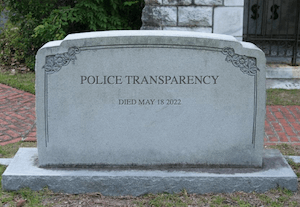Harrisburg, PA – The Pennsylvania Turnpike Commission and the Pennsylvania Department of Transportation today announced additional stretches of the interstate network that will be posted with 70 mph speed limits.
Starting tomorrow, 396 additional miles of the Turnpike and 400 additional miles of certain PennDOT highways will be converted to 70 mph; combined with the 201 combined miles of Turnpike and PennDOT roadways already at 70 mph since July 2014, motorists will see the higher speed limit on 997 miles of roadway in the Commonwealth.
“Before moving ahead, we looked very closely at a number of factors, such as speed and traffic data and the physical characteristics of the highways, in deciding where 70 mph limits could be safely permitted,” said PennDOT Secretary Leslie S. Richards.
Tomorrow morning, PennDOT and Turnpike crews will start installing new 70 mph signs, posts and foundations at some locations and replacing 65 mph signs with 70 mph signs at other locations. They also will be installing curve warning signs where warranted and new speed reduction warning signs in advance of areas where the limit drops from 70 mph to 55 mph.
“Motorists should not look at this change as consent to speed; in fact, it’s as vital as ever to drive sensibly, to avoid distractions and to buckle up,” said PA Turnpike Chairman Sean Logan. “And remember, 70 mph — or any posted speed limit for that matter — is the maximum speed; you should drive slower when traffic, weather or road conditions demand it.”
PennDOT roadways that are being posted with the new limit over the next few days (including current pilot areas) are:
- I-79 from I-90 in Erie County south to a point just north of the PA 228 interchange in Butler County (97 miles)
- I-79 from I-70 in Washington County south to the West Virginia border (33 miles)
- I-80 from the Ohio State border east to a point near mile marker 190 in Clinton County (190 miles)
- I-80 from a point near mile marker 195 in Union County to a point near mile marker 247 in Columbia County (52 miles)
- US 15 from the interchange with PA 14 in Lycoming County north to the New York State border (49 miles)
- I-99 from Exit No. 68 in Centre County south to a point near mile marker 34 in Blair County (34 miles)
- I-99 from Exit No. 28 in Blair County south to mile marker 0 (PA Turnpike) in Bedford County (28 miles)
- I-380 from I-84 in Lackawanna County south to Exit No. 3 in Monroe County (21 miles)
Turnpike travelers will encounter a higher speed limit on virtually the entire toll highway. “After we convert the remaining segments of our system, we will have 493 miles posted at 70 mph,” said PA Turnpike CEO Mark Compton. “As a result, Turnpike motorists will see a 70 mph speed limit on almost 90 percent of our 552-mile system.”
Since the summer of 2014, the Turnpike speed limit has been 70 mph on a 97-mile stretch in south-central Pennsylvania between the Blue Mountain and Morgantown interchanges. All remaining sections of the PA Turnpike system that are now posted at 65 mph — including Turnpike extensions in southwestern PA — will be signed for 70 mph beginning May 3.
Areas of the PA Turnpike now posted at 55 mph will remain at 55 mph, including: work zones; the five tunnels; mainline toll plazas ( “barrier” plazas that stretch across travel lanes, such as Mid County and Delaware River Bridge in the southeast and Gateway and Warrendale in the west); the eastern slope of the Allegheny Mountain; and the seven-mile stretch east of the Bensalem Interchange in Bucks County (this section — now posted at 55 mph due to construction of the I-95/Turnpike link — will remain at 55 mph upon completion of the connections because of a lower design speed).
The lone exception to the Turnpike’s 55/70 rule is during tunnel maintenance. “When we close a tunnel to perform pavement or lighting maintenance, traffic is switched to the adjacent tube resulting in a two-way traffic condition,” Compton said. “The speed limit inside a bidirectional tunnel will continue to be 40 mph for the safety of our customers.”
Areas that didn’t qualify for the increase had crash histories; heavy, weaving traffic or characteristics that did not lend themselves to safe conversion to the higher limit. PennDOT will continue to review crash statistics for the newly posted areas and will consider information generated from ongoing studies before deciding on other areas that could see the higher limit.
Act 89, the transportation funding plan adopted in November 2013, permitted the increase to 70 mph once appropriate safety studies were reviewed. PennDOT and the Turnpike raised the limit in three pilot areas on the Turnpike, Interstate 80 and Interstate 380 in August 2014. The studies did not see a significant increase in speed or spike in crashes in the pilot areas.
